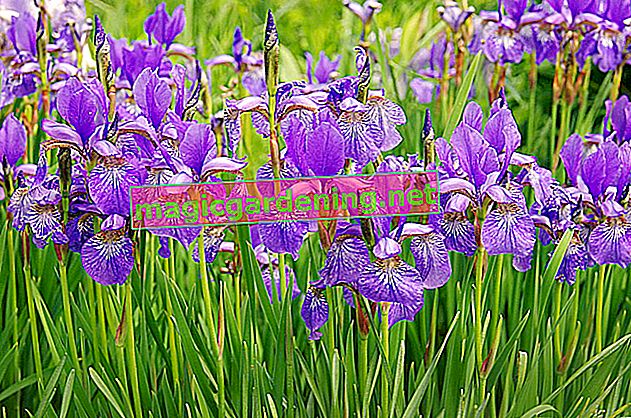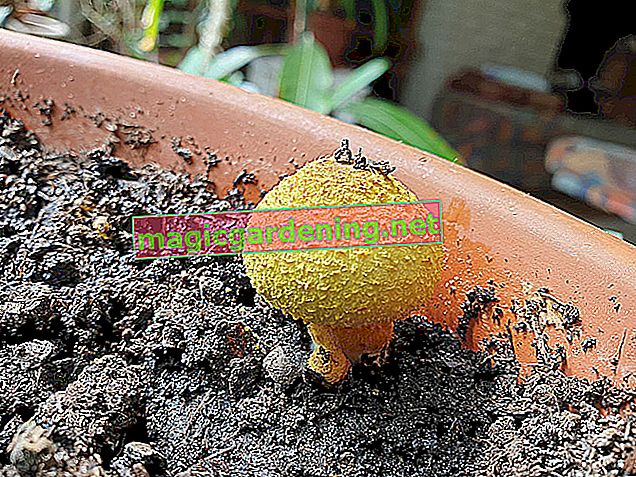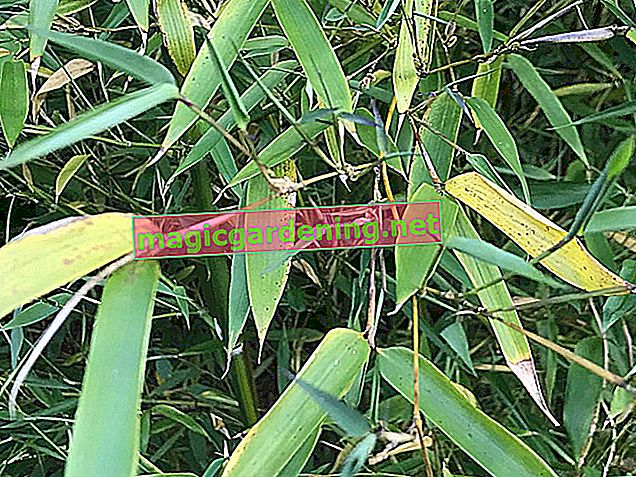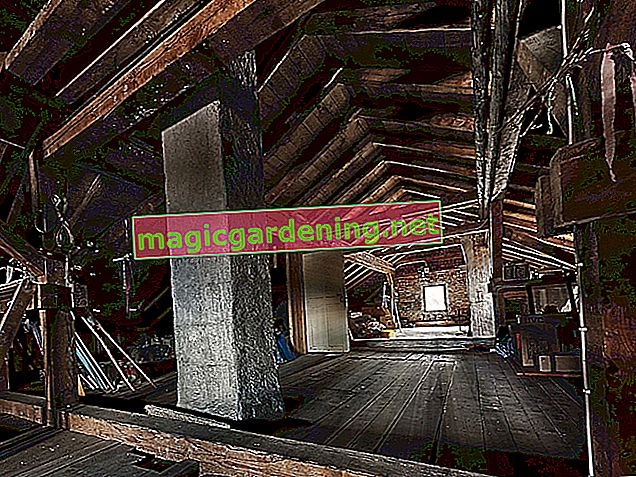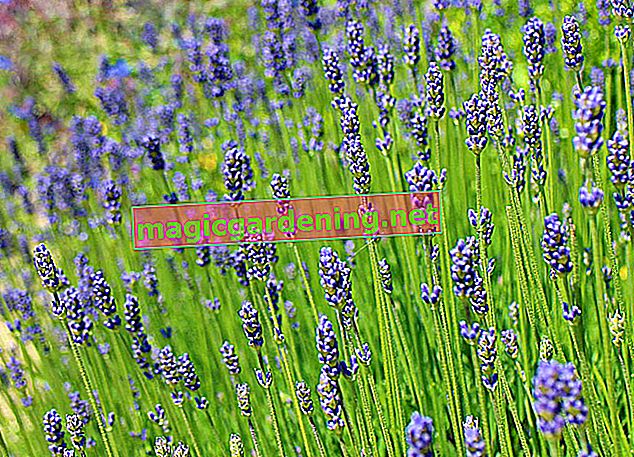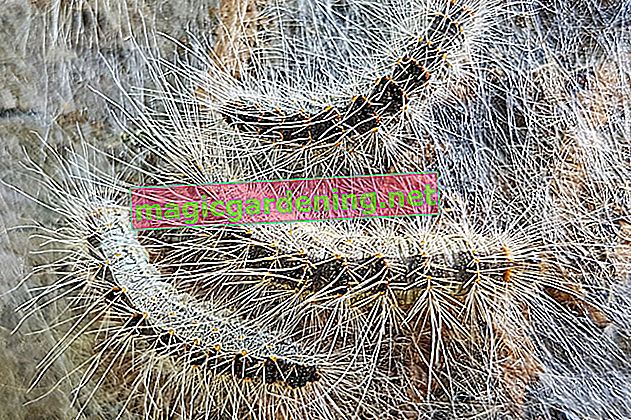
Plant the shamberry properly
Plant the pseudo berries either in autumn or spring in a partially shaded location with moist, humus-rich and acidic soil. Place the root ball in a vessel with lime-free water while you prepare the soil. How to do it right:
- Rake, weed, remove stones and roots from the earth
- Dig small pits at a distance of 25-30 cm with 1.5 times the volume of the root ball
- Mix the excavated soil with acidic leaf compost or bog soil
- Plant a young shamberry about 10 cm deeper than it sat in the pot so that new basal shoots form
also read
- Is the shamberry sufficiently hardy?
- What is important in caring for the pseudo-berry
- The pseudo-berry: poisonous or edible?
Press the soil, pour soft water and spread a layer of mulch. Leaves, grass clippings and bark mulch are well suited.
Care tips
The following brief overview of the care program makes it clear why the pseudo-berry is so popular with beginners in hobby gardening. Loving attention paired with these measures leads to a magnificent ornamental wood:
- Keep the soil constantly slightly moist without waterlogging
- Pour only with soft water
- From April to August, fertilize every 4 weeks with leaf compost or liquid rhododendron fertilizer
- Moderate pruning by a third, maximum by half, in March to mid-April
Winter protection is not required in the bed, as the pseudo-berry is completely frost-resistant. This requirement does not apply in pots and balcony boxes. Cover the vessels with bubble wrap and layer leaves on the substrate.
Continue reading
Which location is suitable?
In the partially shaded location, the pseudo-berry emerges into a floral top form. In contrast, in shady locations, the flowering is usually very poor, so that only a few berries appear in autumn. Loose, moist garden soil meets your needs perfectly. An acidic pH value is of the highest relevance so that the lush heather plant feels in good hands.
The correct planting distance
The pseudo-berry shows off its diverse attributes as a ground cover. To create a dense, evergreen carpet, distribute 8-10 plants per square meter. As a border around a bed or grave, you are right with a distance of 25-30 cm. If the pseudo berry thrives in the balcony box, reduce the value by 5 cm.
What soil does the plant need?
In moist, humus soil with an acidic pH of 4.5 to 6.0, the essential criteria for optimal soil conditions are met. So that the attractive ornamental wood unfolds its magic in the pot and balcony box, we recommend bog soil, rhododendron substrate or standard soil as a substrate. The addition of a handful of lava granules (€ 10.95 at Amazon *) improves the permeability.
When is the flowering time?
The flowering time of a shamberry extends over the months of July and August. The ornamental wood with countless white to pink-white mini-flowers, which stand together in lush clusters, pleased us at the appropriate location. Never cut off withered flowers, because they turn into the enchanting berry decoration in autumn.
Cut the shamrock correctly
If you cut back the 10-20 cm small pseudo-berries by a third or half, this measure promotes further branching and a rich abundance of flowers. The best date for pruning is an overcast, frost-free day between the beginning of March and mid-April. At the same time, thin out the dwarf shrub thoroughly so that it does not perish from below.
Pour the billberry
Don't let a shamrock thirst, because drought stress can lead to significant problems. Water the wood abundantly and regularly as soon as the surface of the earth has dried. Do not sprinkle the leafy plant from above, as this will not allow enough water to get to the roots. Pour the water directly onto the root disc using the pot nozzle. Only use collected rainwater, decalcified tap water or pond water.
Fertilize the shamberry properly
The pseudo-berry invests all its energy in the distinctive flower, leaf and berry costume. Provide sufficient supplies with an organic or mineral-organic fertilizer. From April to August, fertilize the dwarf shrub every 4 weeks with acidic compost or liquid rhododendron fertilizer.
Overwinter
No measures need to be taken in the bed for wintering a shamberry. The ornamental wood is completely hardy and tirelessly sets decorative accents with its leaves and berries even in freezing frost. During the cold season, always water when there is no snow or rain and the earth has dried up.
Cultivated in a tub or balcony box, the root ball should be protected from frost damage. Wrap the planter with bubble wrap or jute tape. The substrate is covered with a layer of leaves or peat dust. You adjust the water supply to the reduced demand. Drought stress or waterlogging mean the end of the plant even in winter.
Propagate shamberry
The shamberry offers 3 uncomplicated methods of vegetative propagation:
- Cut 5-10 cm small cuttings and let them root in a poor substrate
- Cut off runners, cut into pieces with 2-3 eyes and let root in the pot
- Division of the root ball in spring or autumn
Generative propagation by sowing proves to be tricky and time-consuming. The seeds are poisonous cold germs that germinate only hesitantly even after stratification.
Shamberry in the pot
In pots and balcony boxes, the pseudo-berries thrive vitally and healthily in acidic bog soil or rhododendron substrate. A pottery shard over the water drain prevents waterlogging. The maintenance program does not pose any horticultural hurdles. That's how it's done:
- Always water the substrate when the surface is dry
- Apply liquid rhododendron fertilizer every 30 days from April to August
- Before the first frost, place the container on wood and cover it with bubble wrap
- Spread a thick layer of leaves on the substrate
In March / April, cut back the dwarf shrub a little to support further branching. If the pot is completely rooted, repot in fresh substrate.
Is it poisonous?
The name suggests it. The fruits of a shamberry are not suitable for consumption. In fact, the apparently red pulp is made up of thickened sepals that envelop a thin-walled capsule with poisonous seeds. Anyone who eats the fruit anyway suffers symptoms of poisoning such as nausea, vomiting and cramps. Partridge berries should therefore not be placed within the reach of children and pets. The leaves and shoots do not contain any toxic substances.
Continue reading


